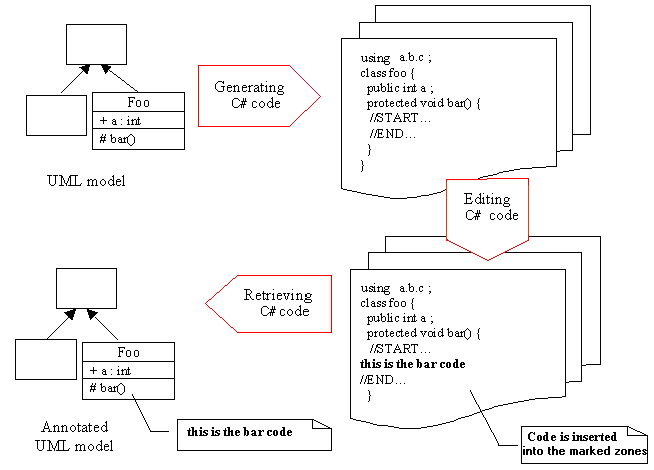Principles of model-driven engineering
Model-driven engineering is the default Modelio functioning mode and is based on complete generation of declarative code from the UML model.
Marked zones are inserted into the generated C# code, with each of these zones corresponding to a note which can be added to the model (see figure below). Application code (virtually reduced to the programming of operations) is written in these marked zones (using with the aid of an external editor or an IDE).
Once the zones have been completed, their contents can be transferred back into the model in the form of corresponding notes. This operation can be carried out as many times as necessary.
The model-driven engineering mode does not, therefore, involve reverse engineering. All "declarative" modifications, such as, for example, the addition of a new attribute, are in fact model modifications and as such must be carried out within Modelio before subsequently regenerating the code.
Certain mechanisms exist to guarantee that the regenerated code does not overwrite any modifications made outside Modelio. Thus, the entire application can be fine-tuned outside Modelio, as long as the model itself is not modified.

Advantages of the model-driven functioning mode
The main advantage of the model-driven functioning mode is that the code always corresponds to the model. In fact, it is only possible to modify declarations by modifying the model itself. Other advantages are:
-
a relatively small modification to the model can lead to significant modifications at declarative code level. These code modifications are automatically taken into account by Modelio C# Designer.
-
total model/code consistency leads to up-to-date documentation, as well as other generation work products (metrics, SQL, …), which are consistent with the code at no additional cost.
Drawbacks of the model-driven functioning mode
The obvious drawback of the model-driven functioning mode is that you are obliged to come back to Modelio after every modification made to the model, in order to regenerate the code.